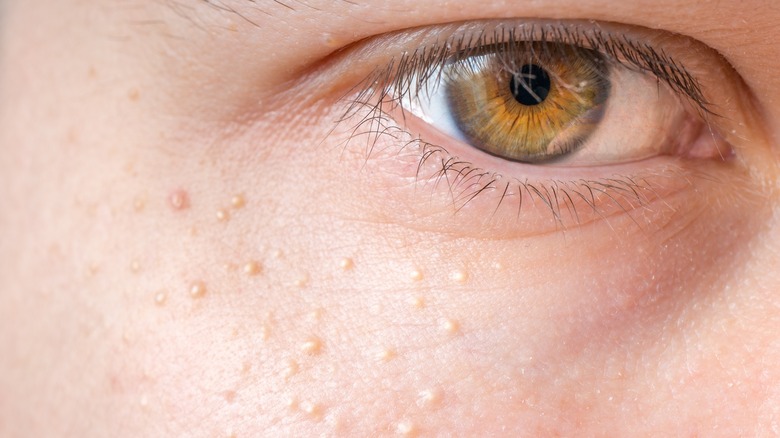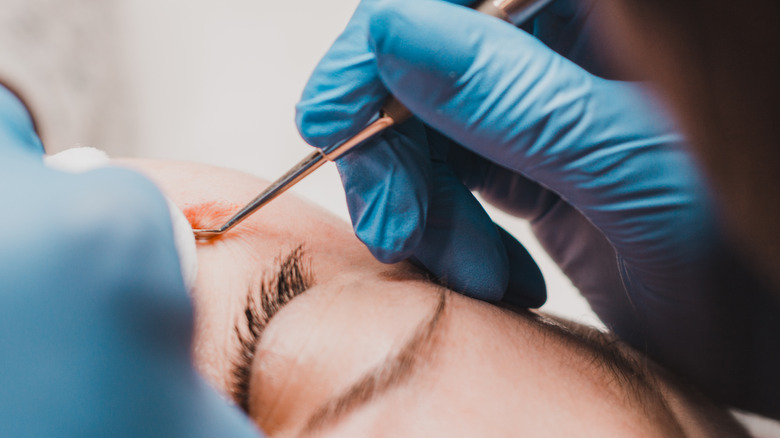How To Get Rid Of Stubborn Milia On Your Face
Milia are small white bumps that typically appear on the face but can develop elsewhere on the body. According to the Cleveland Clinic, milia are extremely common in newborns, with at least 40-50% of all newborns in the United States having some type of milia. They usually go away in babies after a few weeks, however, milia occur in adults as well. Milia are actually cysts that happen at any age and do not require any type of treatment unless a person wants them physically removed.
There are many different types of milia, such as primary, secondary, and milia en plaque. While these small white bumps may look like pimples, they're very different from each other. Verywell Health reports when pimples are popped, fluid flows out, while milia are tiny, hard lumps. Milia are made of dead keratin, or protein, skin cells that have hardened and become trapped underneath the skin. Just like pimples, you should never try to pop milia, as doing so can cause skin damage, like scarring.
Milia prevention and treatment
Milia is not 100% preventable, especially in newborns. In adults, there are steps one can take to prevent stubborn bumps from appearing. According to MedicalNewsToday, avoid applying thick creams or oil-based products onto your face and avoid too much exposure to the sun. If you already have the tiny bumps on your face and want to get rid of them, start with building a skincare routine. Keep your face clean by exfoliating two to three times per week.
In addition to exfoliating, once your face is clean, try steaming your pores open, Healthline reports. The steam may remove any irritants or dirt trapped in your pores. A chemical peel can also remove unwanted milia, but this procedure should be used with caution, as a chemical peel may cause more milia to appear. If you've already had chemical peels in the past, you'll likely be fine, but always talk to a dermatologist or your doctor before trying a new treatment.
Other milia treatment options are available if a person doesn't favor a chemical peel. According to Skin Sight, a doctor can also remove the cysts with a special extracting tool or prescribe a topical retinoid cream. However, some topical retinoid creams may cause irritation or dark spots when used with a chemical peel, so your best treatment option is to leave the milia alone (via MedicalNewsToday).


